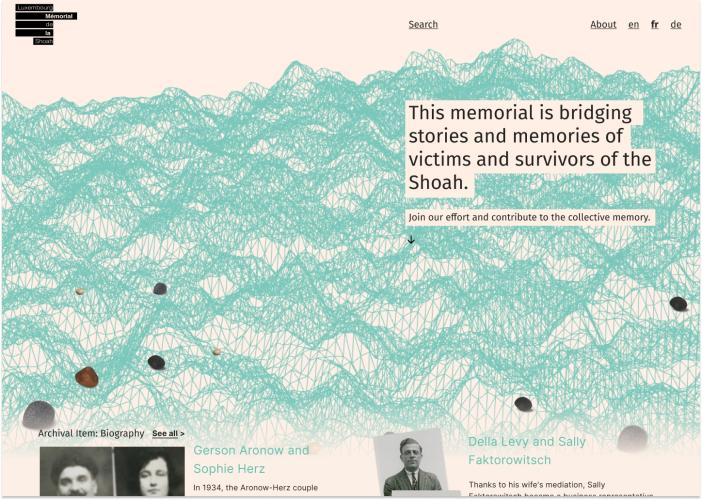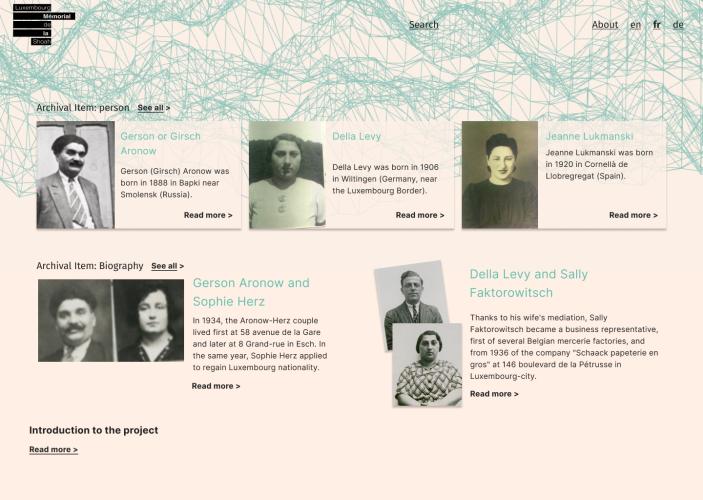2021 in review
Digital research infrastructure
Author: Lars Wieneke, head of the "Digital research infrastructure"
Working in times of a global pandemic
2021 gave the DRI team an opportunity to improve and refine new ways of collaborating beyond the narrow confines of office walls. Based on the early experience of teleworking during the first phase of the COVID pandemic, we continued to conduct daily stand-up meetings each morning of the week for a brief 30 minutes each day. Turning this practice into a habit, helped to increase the mutual understanding of the individual work of each contributor within the team, allowed us to quickly resolve roadblocks and bottlenecks as well as to share knowledge within the team. So far this practice also proved compatible with an increasing amount of hybrid work situations with parts of the team being on-site. Alongside this regular meeting format, instant messaging services and threaded discussions are put into good use to resolve issues quickly and to improve overall communication by moving away from e-mail. Synchronous meetings online or on-site with other groups a the center still remain the norm and provide a burden to the time budget of the team. Whether asynchronous formats that build on mutually shared documentation could improve this situation remains to be seen as the acceptance of such formats remains low for the moment.
Invisible work, real impact
To a large extend, the work of the DRI team is invisible by its very nature: successful services become an integral part of the fabric of everyday work and only when something breakes, its absence gets noticed. 2021 was therefore marked – like the years before – by countless interventions on a small and large scale to keep the more than 100 virtual machines and their interconnections running in the background. This work covers in particular core infrastructure components of the C2DH but also legacy systems or new developments and includes documentation, update and support tasks. Security remains an important issue highlighted by the publicly visible emergence of the log4J issue in December as well as constant external attempts to place malware on exposed servers.
In order to improve the management of issues that inevitably arise in a complex environment, the team implemented a new ticketing system on the university portal service.uni.lu. This new system allows us to make sure that all requests are followed up and resolved according to their priority.
New services and tools
DRI made significant contributions to the publication of new services and tools in cooperation with the other teams of the C2DH. To name but a few, the team contributed the full technical development and design of the journal of digital history and keeps a specific focus on its future development with two dedicated positions and support of the design group. The team also worked on the implementation and design of the diverse exhibition projects like Popkult60.

The team contributed extensively to the design and interaction concept for the Mémorial Digital de la Shoah which will be implemented in the coming year. One of the development challenges that the team tried to overcome was to find a balance between the dehumanising nature of deportation lists created by the perpetrators while maintaining their information value for research by the descendants of Shoah victims.
Within the AAA (Augmented Artworks Analysis) project, the DRI team is in charge of designing a museum exploration application and completed a qualitative study to foster the interdisciplinary work of the project as well as to solicit user input for the design of the future application.
Based on the research data repository introduced in 2020, the DRI team implemented interfaces between the Dataverse instance and different internal services such as our digital library solution or the various digital asset management solutions.
DHLab
While the overall experience with teleworking was positive, some tasks are much harder to conduct remotely. This was in particular the case of the DHLab which despite the challenges imposed by social distancing and mask mandates managed to remain open and accessible throughout 2021 to digitize vital source material for the work of the C2DH.
In 2021 the DHLab increased its scanning capabilities through the integration of a hybrid scanning workstation that will significantly increase our capabilities to perform high-performance and high-quality scans of loose sheet paper.
(video hybrid scanner)
The DHLab collaborates closely with the Training Trading Zone initiative and provides several training courses for the C2DH team. Furthermore, the training program for the student assistants has been formalized and documented to streamline the integration of new students.



